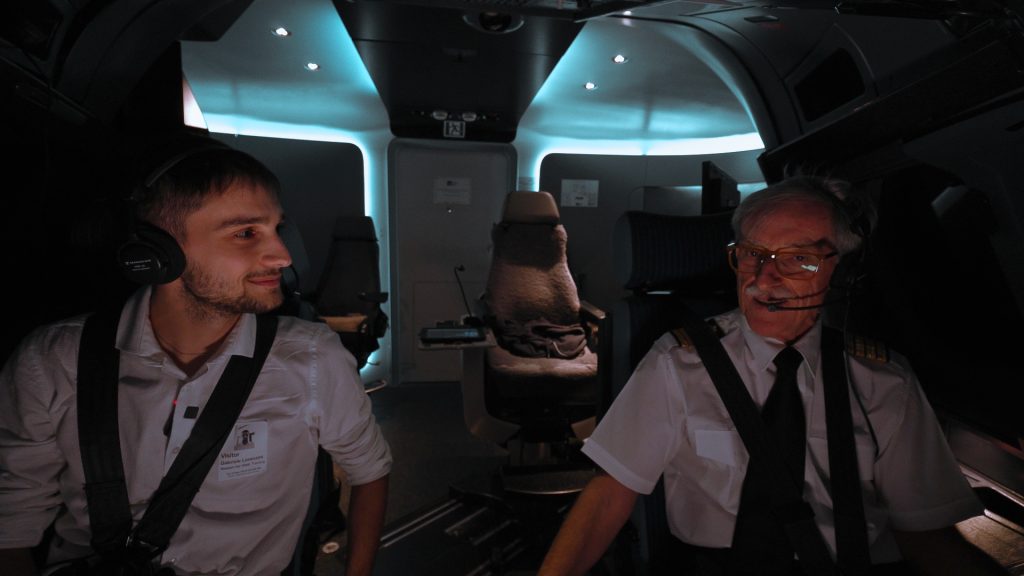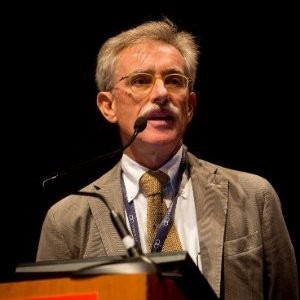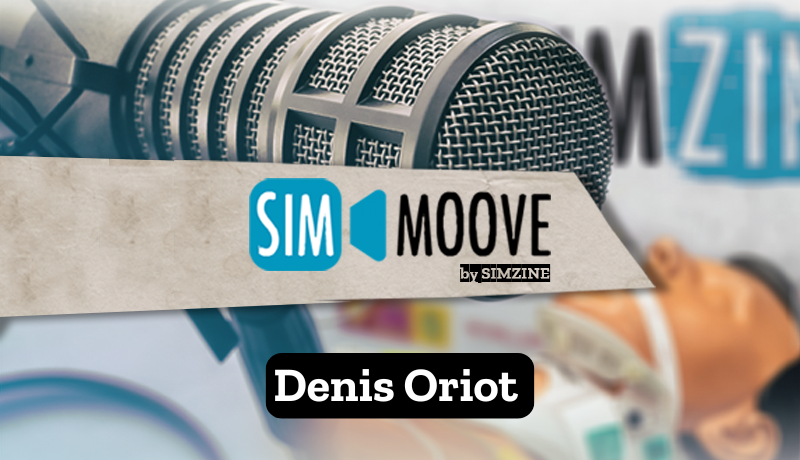A dream turned into reality: the dream story of a nurse in the role of a pilot in the cabin of an aircraft, facing an emergency situation with professionalism and calmness. The dream, full of operational strategies, turns out to be an experience in a flight simulator. The reflections that emerge explore the importance of communication, teamwork and simulation in facing complex challenges. An invitation to dream and improve through practice and collaboration.
There is nothing like a dream to create the future
Victor Hugo
I had a dream.
And like all dreams that impress, I feel the need to tell it, at the risk of boring or sounding like someone with his head in the clouds.
I was on an airliner, in the cockpit, right in the pilot’s seat. I was gripping the control stick tightly with one hand and the engine levers with the other. My feet rested on the pedals, heels on the floor and toes on the brakes. Five-point belts hugged me securely to the seat, which I could adjust in height, distance and angle. My right arm was resting on a special type of support, the inclination of which I could millimetrically adjust so as not to create any strain on my wrist and therefore on the hand that controlled the cloche.
In the dream I said to myself: “are these stratagems what they call Human Factors?“, those strategies for constructing equipment that facilitate the work of the operators?
My eyes were saturated with lights, colours and numbers popping up from the displays in front of me. A huge video game where everything was happening fast. I was trying to keep my wings level, not to lose speed, to understand when and how to turn or how to climb and descend. But also to look out, to avoid the mountains or the storm cell to my right. I felt a strong need not to lose any data and my mind was working like an overheated processor to keep everything under control, not to lose any parameters.
In the dream I said to myself: ‘now I understand what it means to divide attention. Not to fall into the trap of fascination or fixate on something that attracts with the risk of losing the overall context”.
But I was not alone. At my side was another pilot who, step by step, delivered a strange litany. At my every request he would repeat my command, execute it and confirm once again that he had done it. And I, like a mechanical parrot, repeated that he had understood and executed. And on and on, for every important action.
In the dream I said to myself, “could this be the famous Communicative Protocols?“, those information exchange techniques designed not to lose any important data and share it unambiguously with others?
My second pilot was watching my every action. He supported me by reading the checklists aloud, anticipating the actions to be taken and their sequence. At regular intervals, he corrected, supplemented.
In the dream I said to myself: ‘he is not doing this to control me, but to protect me from mistakes and forgetfulness‘.
Suddenly the atmosphere heats up and from one of the displays comes a fire warning for the right engine. A red light, accompanied by a bell sound and a lot of vibrations. My colleague, in a calm and clear voice, recites ‘Engine number 2 FIRE: emergency checklist’. In my head I thought ‘The hands are running, running, running!‘. Nevertheless, there followed a series of actions done with studied slowness, each one preceded by a loud statement so that I could follow what was happening. No hurry, with a sustained and controlled rhythm.
In the dream I said to myself: ‘so there is no need to hurry if you can handle an emergency in an orderly and precise manner.
What do you do when you fly with only one engine? You decide where to go, but first you assess the general state of the aircraft, the weather conditions, the airports available for a safe landing. My colleague keeps track of all this and before each decision he uses some curious acronyms (FORDEC, DECIDE, T-DODAR) which I cannot repeat but I understand that they help to make the best decision, in the shortest time.
In the dream I said to myself: ‘so even in an emergency I can control impulsiveness and with the right decision-making strategy, rein in possible biases and choose the best option’.
It all seemed so real that I could feel the sensation of the acceleration on take-off (crushing you against the backrest) or the braking on landing, with the fuselage vibrating. And it all pushed me to immerse myself even more in the reality of flying.
In the dream I said to myself: ‘if this dream is so true, then we can recreate it and do it again, simulating reality to train again and again and improve’.
This thought was so strong that I woke up and realised where I really was: in a flight simulator. In a place where the dream becomes reality and reality becomes scenery. And where each scenario can develop in total freedom. Freedom from danger, judgement and guilt. ‘Trying and trying again’, countless times, until our desires for perfection begin to take shape and concreteness. Freeing ourselves from mistakes and giving us better security. A precious reward to share with our passengers.

One last thought crossed my mind as I left the cockpit, an intuition. Maybe working in a team is like making music in an orchestra? Maybe we are small notes in a big score? And like those who make music, it is not only necessary to be able to read it, but to be able to play along with others.
And it was then that my colleague looked me in the eye, and in a low voice whispered: “Do you hear the music?“. In my mind, with lucidity, I replied: ‘Yes, I hear it’.
Can we who wear white coats also try to dream like that?
READ ALSO








































